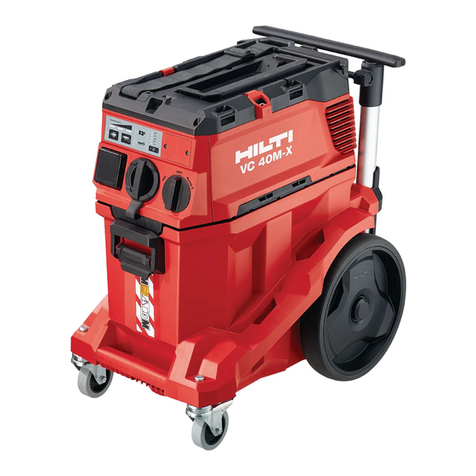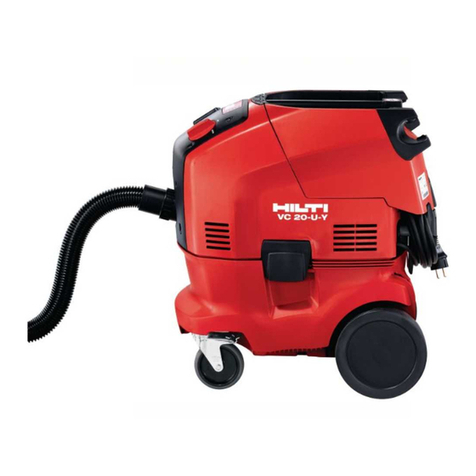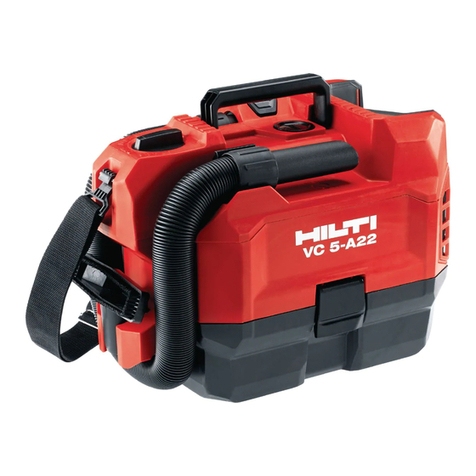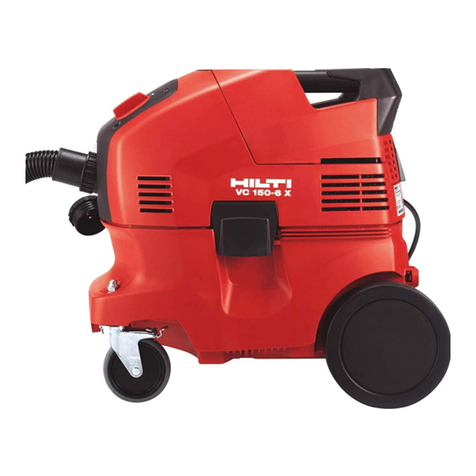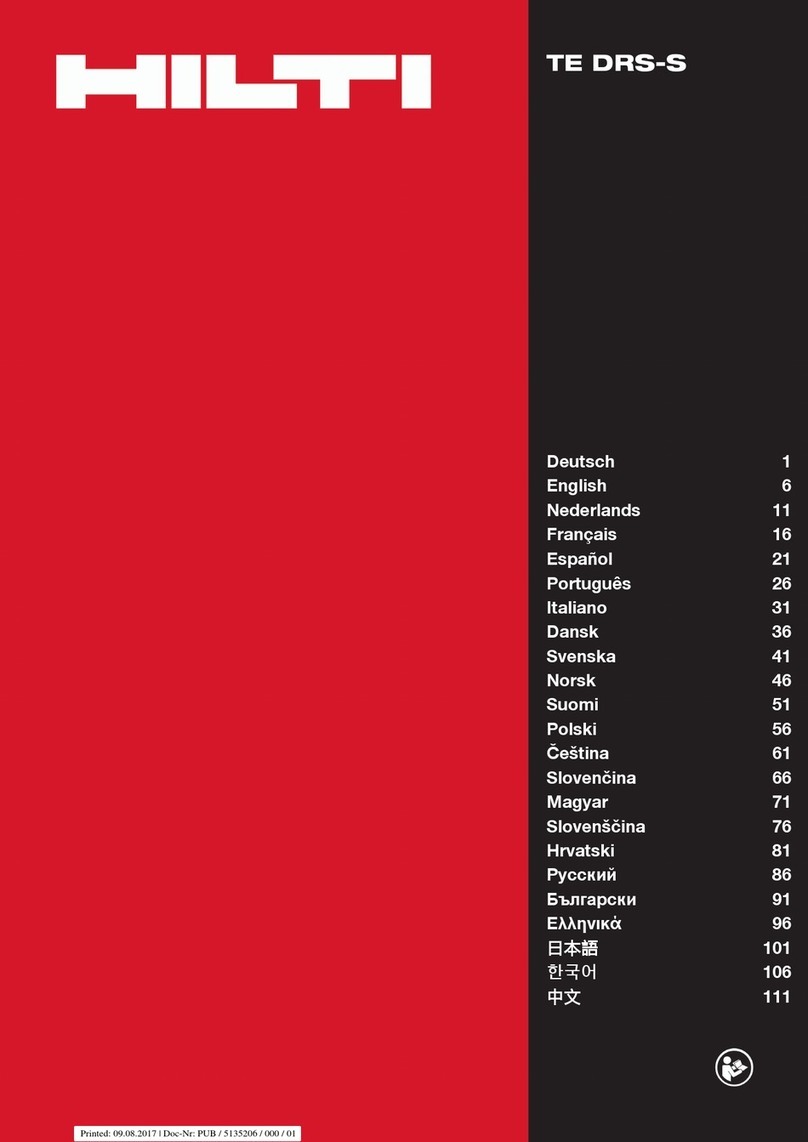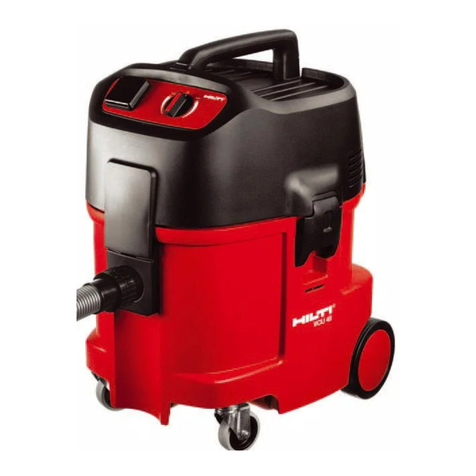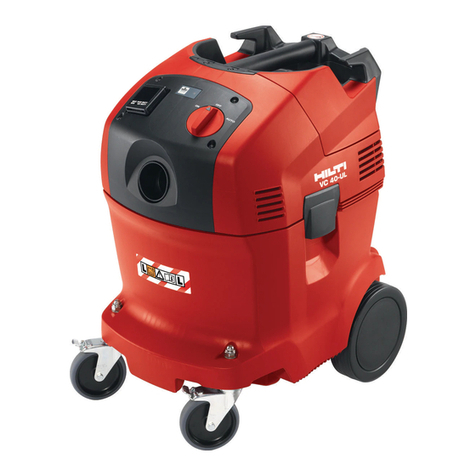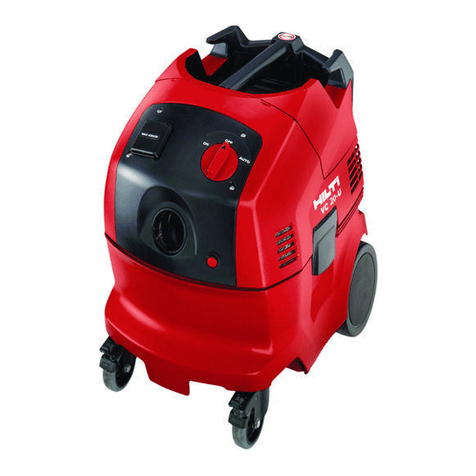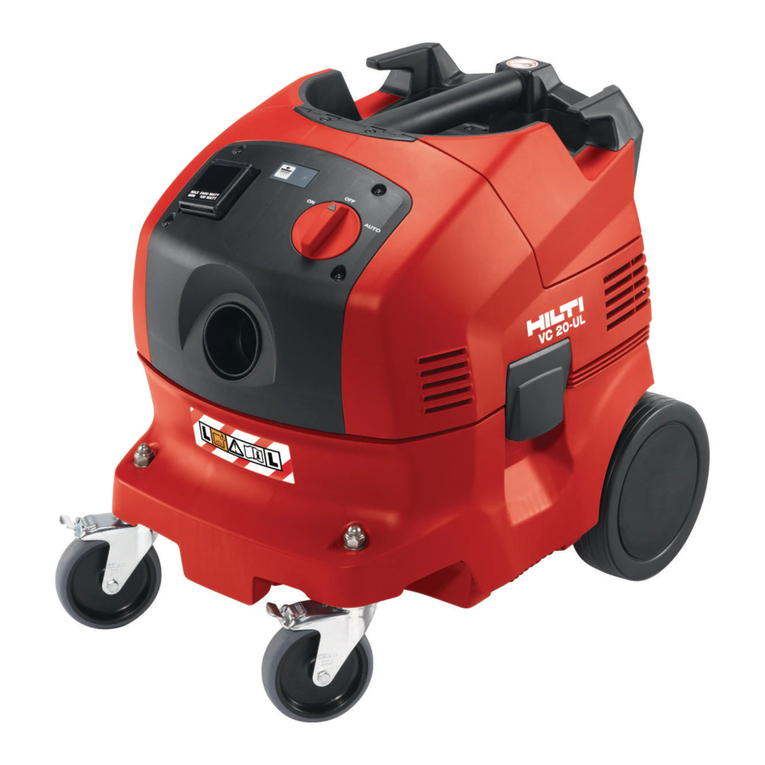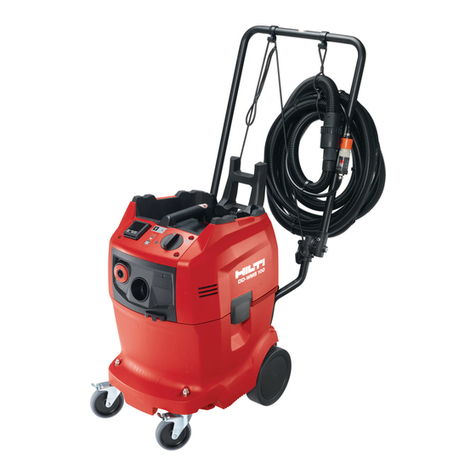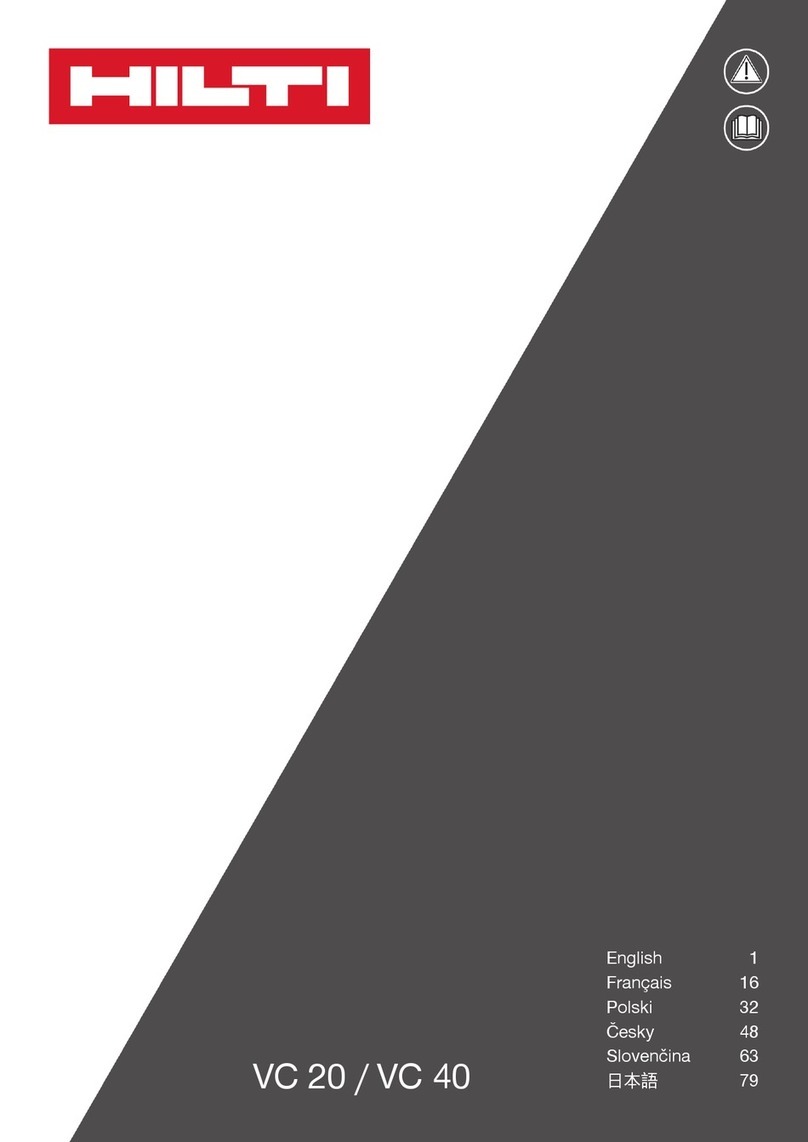3
5. Sicherheitshinweise
5.1 Grundlegende Sicherheitsvermerke
Neben den sicherheitstechnischen Hinweisen in den ein-
zelnen Kapiteln dieser Bedienungsanleitung sind folgende
Bestimmungen jederzeit strikt zu beachten.
5.2 Bestimmungsgemässer Gebrauch
Das Gerät ist ein Trockensauger der Staubklasse L gemäss
EN 60335-2-69. Es ist besonders zum Absaugen von
grossen Mengen von Mineralstäuben mit MAK > 1 mg/m3
(MAK = Maximale Arbeitsplatz Konzentration), im Ein-
satz mit Hilti Diamantschleifer, Hilti Trennschleifer, Hilti
Bohrhämmer und Hilti Diamanttrockenkernbohrer, geeig-
net.
5.3 Missbräuchlicher Gebrauch
●Generell dürfen keine Flüssigkeiten (Wasser, Benzin,
Öl, Säuren, Laugen etc.), heisses oder explosives Gut
sowie gesundheitsgefährdende Stoffe aufgesaugt wer-
den
●Stäube mit einem MAK < 1 mg/m3sind gesundheits-
gefährdend und dürfen nicht gesaugt werden
●Das Gerät ist nicht für den Betrieb in automatischen
oder halbautomatischen Anlagen geeignet
●Manipulationen oder Veränderungen am Gerät sind
nicht erlaubt
●Benutzen Sie, um Verletzungsgefahren zu vermeiden,
nur original Hilti Zubehör und Zusatzgeräte
●Beachten Sie die Angaben zu Betrieb, Pflege und
Instandhaltung in der Bedienungsanleitung
5.4 Stand der Technik
●Das Gerät ist nach dem neusten Stand der Technik
gebaut
●Vom Gerät und seinen Hilfsmitteln können Gefahren
ausgehen, wenn sie von unausgebildetem Personal
unsachgemäss behandelt oder nicht bestimmungsgemäss
verwendet werden
5.5 Sachgemässe Einrichtung der Arbeitsplätze
●Tragen Sie rutschfestes Schuhwerk und sorgen Sie
jederzeit für sicheren Stand
●Vermeiden Sie eine ungünstige Körperhaltung
●Sorgen Sie für eine gute Beleuchtung
●Sorgen Sie für gute Belüftung des Arbeitsplatzes
●Halten Sie das Arbeitsumfeld frei von Gegenständen
an denen Sie sich verletzen könnten
●Halten Sie beim Arbeiten andere Personen, insbe-
sondere Kinder, vom Wirkungsbereich fern
●Führen Sie beim Arbeiten das Netz-, das Verlänge-
rungskabel und den Absaugschlauch immer nach hin-
ten vom Gerät weg
●Achten Sie darauf, dass Sie nicht über das Netz-, das
Verlängerungskabel oder den Absaugschlauch stolpern
●Transportieren Sie das Gerät nicht mit einem Kran
5.6 Stäube
●Stäube mit einem MAK < 1 mg/m3sind gesundheits-
gefährdend und dürfen nicht gesaugt werden
●Vermeiden Sie jegliche Entzündungsquellen, wie z. B.
Rauchen von Zigaretten während der Arbeit oder während
der Entleerung des Gerätes.
5.7 Generelle Gefährdung durch das Gerät
●Betreiben Sie das Gerät nur bestimmungsgemäss und
in einwandfreiem Zustand
●Lassen Sie das Gerät nie unbeaufsichtigt
●Vergewissern Sie sich vor dem Einstecken des Netz-
steckers in die Steckdose, dass das Gerät ausgeschaltet
ist
●Ziehen Sie bei Nichtgebrauch des Geräts (z.B. während
einer Arbeitspause), vor Pflege, Instandhaltung und Fil-
terwechsel, den Netzstecker immer aus der Steckdose
●Nicht in Gebrauch stehende Geräte müssen, an einem
trockenen, hochgelegenen oder abgeschlossenen Ort
ausserhalb der Reichweite von Kindern, aufbewahrt wer-
den
●Überprüfen Sie den korrekten Sitz des Filters
●Stellen Sie sicher, dass der Filter unbeschädigt ist.
5.8.1 Mechanisch
●Befolgen Sie die Hinweise für die Pflege und Instand-
haltung
●Überprüfen Sie, ob die beweglichen Teile einwandfrei
funktionieren und nicht klemmen, oder ob Teile beschä-
digt sind. Sämtliche Teile müssen richtig montiert sein
und alle Bedingungen erfüllen, um den einwandfreien
Betrieb des Geräts zu gewährleisten
●Verwenden Sie nur Originalwerkzeuge
5.8.2 Elektrisch
●Schützen Sie sich vor elektrischem Schlag. Vermei-
den Sie Körperberührung mit geerdeten Teilen, z.B. Roh-
ren und Heizkörpern
●Prüfen Sie das Gerät inkl. Netz- und Verlängerungs-
kabel sowie die Steckverbindungen auf ordnungsgemässen
Zustand. Betreiben Sie das Gerät nicht, wenn Beschädi-
gungen vorliegen, das Gerät nicht komplett ist oder Bedie-
nungselemente sich nicht einwandfrei betätigen lassen
●Ziehen Sie den Stecker nicht am Kabel aus der Steck-
dose
●Schützen Sie das Kabel vor Hitze, Öl und scharfen Kan-
ten
●Wird bei der Arbeit das Netz- oder Verlägerungskabel
beschädigt, dürfen Sie das Kabel nicht berühren. Ziehen
Sie den Netzstecker aus der Steckdose
Printed: 07.07.2013 | Doc-Nr: PUB / 5071296 / 000 / 00

